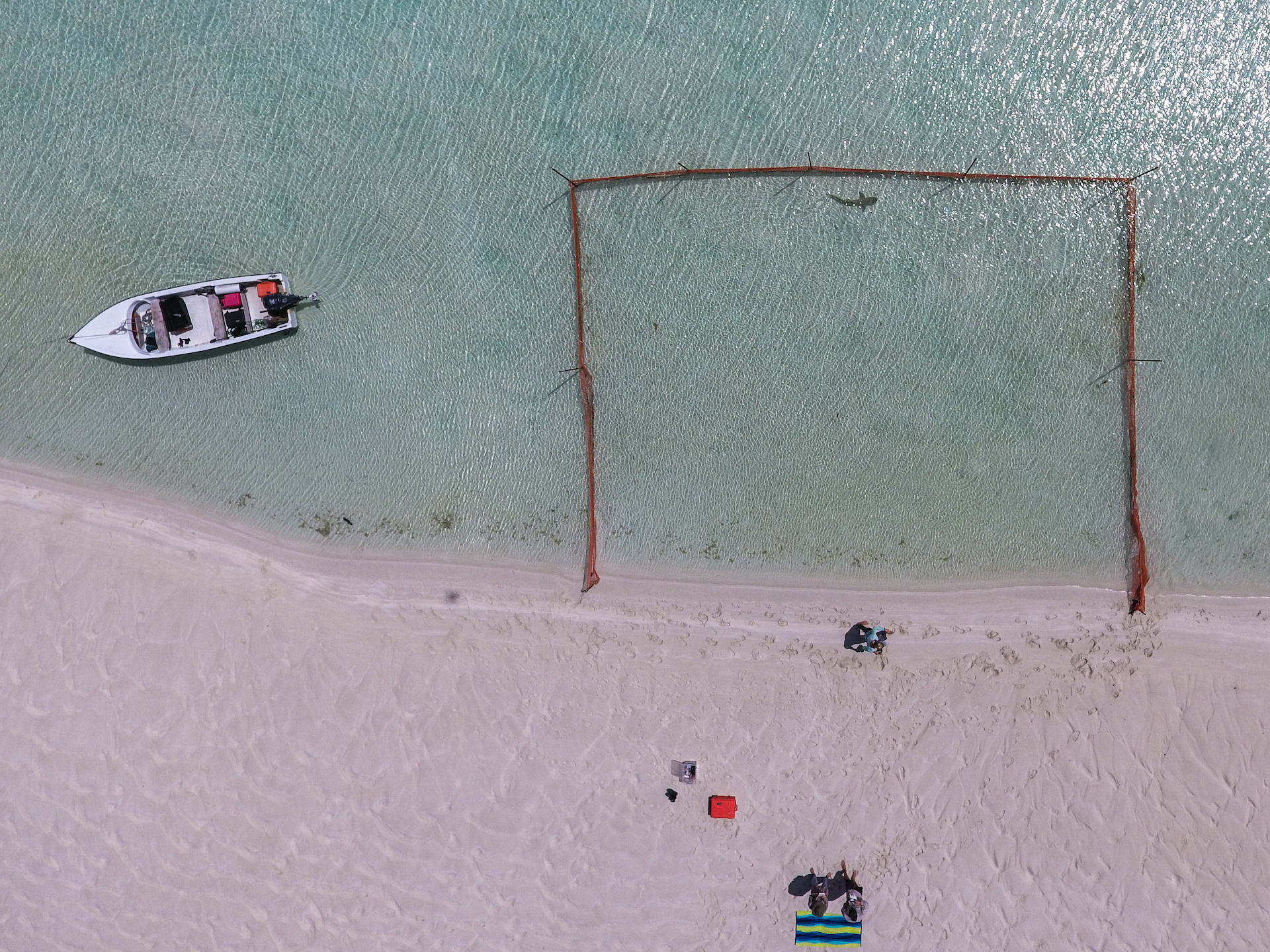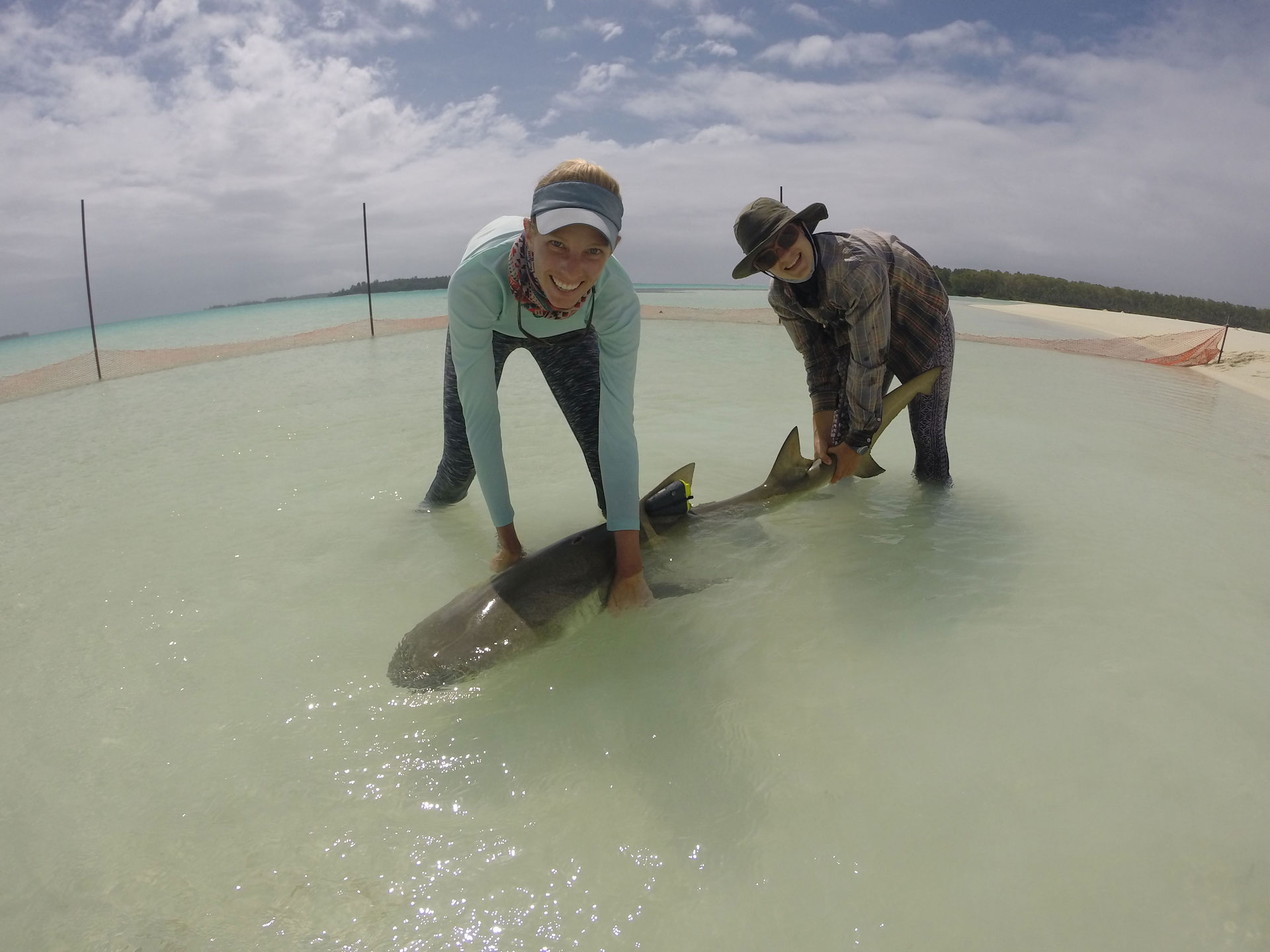Activity Trackers for Sharks II: Captivity
Capturing the Secret Lives of Sharks
In St Joseph Atoll, lemon sharks are a frequent sight. And yet little is known about how these sharks function and behave over time and space. With this in mind, we’re using the technology found in Accelerometer Data Logger (ADL) tags, or activity trackers, to explore these questions. But before we become overly excited about Fitbits for sharks, it’s necessary to collect baseline data and ground truth the initial results from captive sharks.
First Things First
Essentially, before we put the activity trackers on free-ranging sharks, we need to understand how the data we collect matches up to actual patterns of the shark’s behavior. This is where building an observation pen (check it out!) comes in. With a design that takes into account tidal changes in St Joseph Atoll, we can observe the behavior of a captive shark from an elevated sandbank over certain tides.

Drone footage helps to collect baseline data. Here a photo from the sky shows the shark in the observation pen, along with researchers on the sandbank and the boat anchored nearby. Photo by Ryan Daly | © Save Our Seas Foundation
Upon catching a shark within our our targeted size class, the Goldilocks zone of sub-adult lemon sharks, we quickly fit it with the special ADL tag activity tracker package and release it into the pen. Using a drone and old-fashioned observation, we watch and record the movements of the captive tagged shark.

Look Mom, both hands! Clare Daly and Kerryn Bullock prepare to remove an activity tag and release a Goldilocks sized lemon shark after observation. Photo by Ryan Daly | © Save Our Seas Foundation
To date we’ve caught and tagged four sub-adult lemon sharks with activity trackers. Three have been female and one male, ranging in size between 130cm and 203cm, and with a mean total length of 178cm. For the sake of accurate data, it’s important that we observe the sharks as they recover from being captured and by the same token as they return to normal behavior. Our average time for observing and filming of the four sharks tagged with activity trackers so far is 2 hours 39 minutes.
Looking Ahead
We’ll continue to collect baseline data from sharks tagged with activity trackers before compiling the data and matching up the data. When we’re confident that we know what each data point means, we’ll put the tags to the test on sharks at liberty. In the upcoming month, check back for updates on more tagged sharks with this project. With luck, early results will be explored next month!
